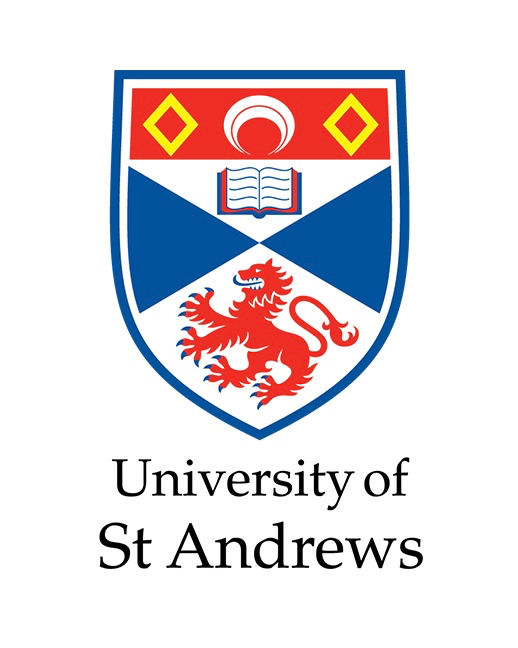| 10 December 2024 | Giovanni Strampelli (STScI, in-person) – A star is born! An overview on star formation in nearby star-forming regions. |
| 26 November 2024 | Alvaro Ribas (University of Cambridge, in-person) – What are protoplanetary disks hiding? |
| 5 November 2024 | Deborah Kent (University of St Andrews, in-person) – Last of the old, first of the new? The 1860 Total Solar Eclipse |
| 29 October 2024 | Alessio Traficante (INAF, online) – From clouds to fragments: on the multi-scale interplay between gravity and turbulence |
| 15 October 2024 | Kenneth Wood (University of St Andrews, in-person) – Far-ultraviolet lighting to prevent the airborne spread of disease |
| 8 October 2024 | Sophia Flury (University of Edinburgh, in-person) – Clearing the Path to Cosmic Reionization |
| 1 October 2024 | Pooneh Nazari (ESO, online) – From Gas and Ice to Planets: Exploring Early Disk Properties with ALMA and JWST |
| 24 September 2024 | Steph Campbell (Newcastle University, in-person) – Results from Mid-Infrared JWST MIRI imaging of GATOS galaxies |
| 17 September 2024 | Elena Asencio (University of Bonn, remote) – Do the orbital poles of the Milky Way streams point to a past M31 interaction? |
| 10 September 2024 | Harry Bevins (Cambridge University, in-person) – Machine Learning Enhanced Bayesian Inference for Cosmology |
| 3 September 2024 | Maya Skarbinski (Johns Hopkins University, in-person) – Quenching galaxies at cosmic noon |
| 3 September 2024 | Kate Rowlands(STScI, in-person) – Post-starburst galaxies: a tool to track quenching throughout cosmic time |
| 23 July 2024 | Indranil Banik (University of St Andrews, in-person) – Using baryon acoustic oscillations to test the local void solution to the Hubble tension |
| 16 July 2024 | Michael Backes (University of Namibia, in-person) – From the darkest observatories to the highest energies – Astronomy in Namibia |
| 9 July 2024 | Desika Narayanan (University of Florida, in-person) – A Tour of Cosmic Dust in Galaxies |
| 28 May 2024 | James Aird (University of Edinburgh, in-person) – Black hole growth across different galaxy evolution phases |
| 21 May 2024 | Vicky Fawcett (University of Newcastle, in-person) – Exploring the connection between radio emission and dust obscuration in quasars |
| 14 May 2024 | 2nd-year PhD talks (University of St Andrews) |
| 10 May 2024 | Michal Bilek (Paris Observatory, LERMA, in-person) – Extragalactic archeology: the origin of the prominent tidal features in the galaxy NGC474 |
| 7 May 2024 | 2nd-year PhD talks (University of St Andrews) |
| 3 May 2024 | Scott Hagen (Durham University, in-person) – What Drives the Variability in AGN? |
| 30 April 2024 | Marc Buie (Southwest Research Institute, in-person) – Investigating Solar System Origins with Occultations |
| 23 April 2024 | Alexia Marie Lopez (University of Central Lancashire, in-person) – Investigating Ultra-Large Large-Scale Structures: Potential Implications for Cosmology |
| 2 April 2024 | Corey Pirie (University of Edinburgh, in-person) – An Unbiased View of the Physical Drivers of Star Formation over cosmic timeCallum Donnan (University of Edinburgh, in-person) – JWST PRIMER: A new multifield determination of the evolving galaxy UV luminosity function at z=9-15 |
| 19 March 2024 | Maya Petkova (Chalmers University of Technology, remote) – Gas structure and kinematics in the extreme star-forming environment of the Central Molecular Zone |
| 12 March 2024 | Atharva Bagul (Durham University, in-person) – Cygnus A Obscuring Torus: Ionic, Molecular or Atomic? |
| 5 March 2024 | Katarina Kraljic (Strasbourg University, remote) – Emergence and cosmic evolution of the Kennicutt-Schmidt relation driven by interstellar turbulence |
| 20 February 2024 | Harry Desmond (University of Portsmouth, remote) – Four ways of looking at the Radial Acceleration Relation |
| 13 February 2024 | Nicholas Boardman (University of St Andrews) – Galaxy gas-phase abundances and their connection to star-formation histories |
| 6 February 2024 | Roberta Vieliute (University of St Andrews) – Telescope Calibration and Light Reverberation: Echo Mapping of NGC 3783. |
| 30 January 2024 | David Taylor (University of St Andrews) – ALMA CoCCoA observations: a new candidate young high mass binary system |
| 23 January 2024 | Indranil Banik (University of St Andrews) – Joint solution to the Hubble and bulk flow tensions using the observed local supervoid and faster structure growth |

